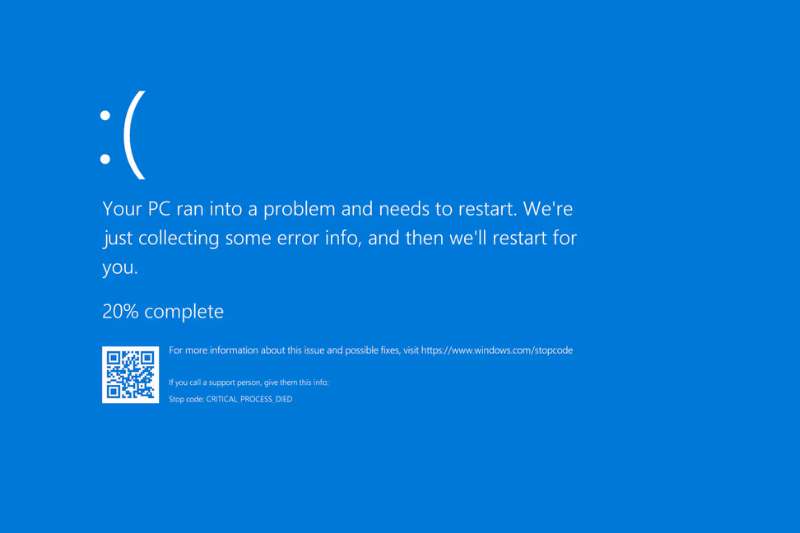
For decades, the Blue Screen of Death or BSOD error has haunted Windows users worldwide. Whether you were working on an important file or just browsing online, that infamous blue screen meant one thing — your system had crashed. But now, Microsoft is officially retiring the Blue Screen of Death in the latest Windows 11 update.
Yes, it’s true. After 40 years, the iconic Windows BSOD crash screen is being replaced starting with the upcoming Windows 11 24H2 update. Let’s explore what’s changing in Windows error screens, why it’s happening now, and what it means for everyday Windows users and PC troubleshooting.
The Blue Screen of Death has been part of Microsoft Windows since the early 1990s. It appeared whenever the operating system encountered a serious error — usually caused by hardware faults, driver failures, or software conflicts. This critical Windows error screen was Microsoft’s way to stop further damage and alert users to system crashes.
Though technically useful, the BSOD became a symbol of frustration for Windows users and IT professionals. Over the years, Microsoft tweaked the BSOD by adding QR codes for troubleshooting and simplifying error messages. But the classic blue background stayed iconic for decades until now.
The new screen of death introduced by Microsoft in Windows 11 24H2 update is no longer blue — it’s black. This change is part of the Windows Resiliency Initiative aimed at making crash recovery simpler, faster, and less intimidating for users.
The updated Windows error screen still shows important error details like the stop code and failed driver, but with a modern, minimalist design. The sad face emoji and large QR code are removed. Instead, users see a progress bar showing the restart status along with a streamlined error display. This helps reduce panic and improve Windows crash recovery time.
In July 2024, a massive global outage caused by a faulty security update from CrowdStrike affected millions of Windows systems worldwide. This Windows update error caused countless blue screen crashes on business, airline, hospital, and banking computers.
This widespread Windows 11 system crash was a wake-up call. Microsoft recognized that the traditional Blue Screen of Death was outdated and confusing and slowed down recovery. The company decided it was time for a fresh approach to Windows crash errors and recovery mechanisms.
Besides changing the screen color, Microsoft is introducing smart features with the new Windows 11 Black Screen of Death. These include quick machine recovery where devices automatically attempt fixes after crashes, smarter error tracking to help developers identify bugs faster, and modular recovery that allows restarting individual Windows components like display drivers independently.
These Windows 11 updates reduce downtime for both enterprise and home users by improving crash recovery and error diagnostics.
Alongside changes to the Blue Screen of Death, Microsoft is enhancing Windows security by moving antivirus and Endpoint Detection and Response (EDR) tools out of the Windows kernel. This separation prevents faulty third-party security updates from causing system crashes, like the recent CrowdStrike incident.
This Windows security update improves system resilience and stability by isolating critical operating system functions from third-party software.
At first, the new Black Screen of Death may confuse some Windows users who are accustomed to the blue screen. However, the cleaner and less stressful design fits better with modern Windows 11 dark mode settings and overall user experience.
The change offers a consistent visual interface across devices and helps users feel less alarmed when errors occur. Over time, this Windows 11 error screen update will become the new normal.
Microsoft plans to roll out the Black Screen of Death with Windows 11 24H2 update, expected in late summer or fall of 2025. Members of the Windows Insider Preview Program may already experience this change. For regular users, the update will arrive automatically through Windows Update, requiring no manual installation.
The Blue Screen of Death was more than just an error message. It became a symbol of frustration, a famous part of tech culture, and an IT professional’s nightmare. But as Windows evolves, Microsoft must update its system crash mechanisms.
Replacing the Blue Screen of Death with the Black Screen of Death reflects Microsoft’s dedication to modernizing, securing, and simplifying the Windows user experience. This update is not just a color change but a shift in how Windows handles failure, recovery, and system resilience after 40 years.